Most paleontology enthusiasts are familiar with ammonites, the predatory mollusks with muscular arms and calcium carbonate shells. Most ammonites’ shells were disc-shaped coils (planispiral) that contained chambers, some of which afforded buoyancy, and one of which housed the squishy parts of the animal. One lineage of ammonites went a little wild with their shell coiling, producing some very strange shapes. Today’s review contains one member of this lineage, the Late Cretaceous Pravitoceras (“crooked horn” in a mix of Latin and Greek).
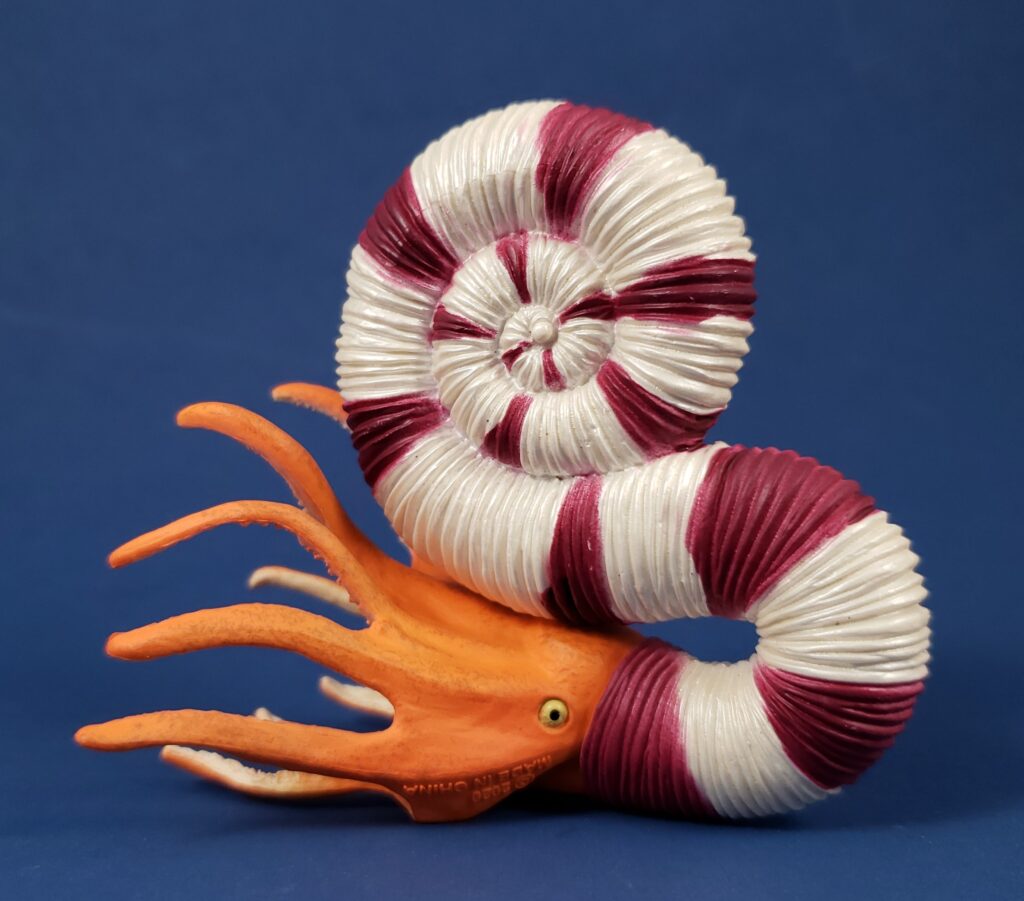
After 200 million years or so of perfectly good disc-shaped ammonoids, the Ancyloceratini (“curved-horned ones”) evolved in the Jurassic, and became widespread and common in the Cretaceous. These ammonites are often called heteromorphs. Compared to some of its relatives, Pravitoceras looks nearly normal. Its narrower coils, from its young life, had a pretty standard tight coil, but its later growth took a literal U-turn, resulting in the shape you see here.
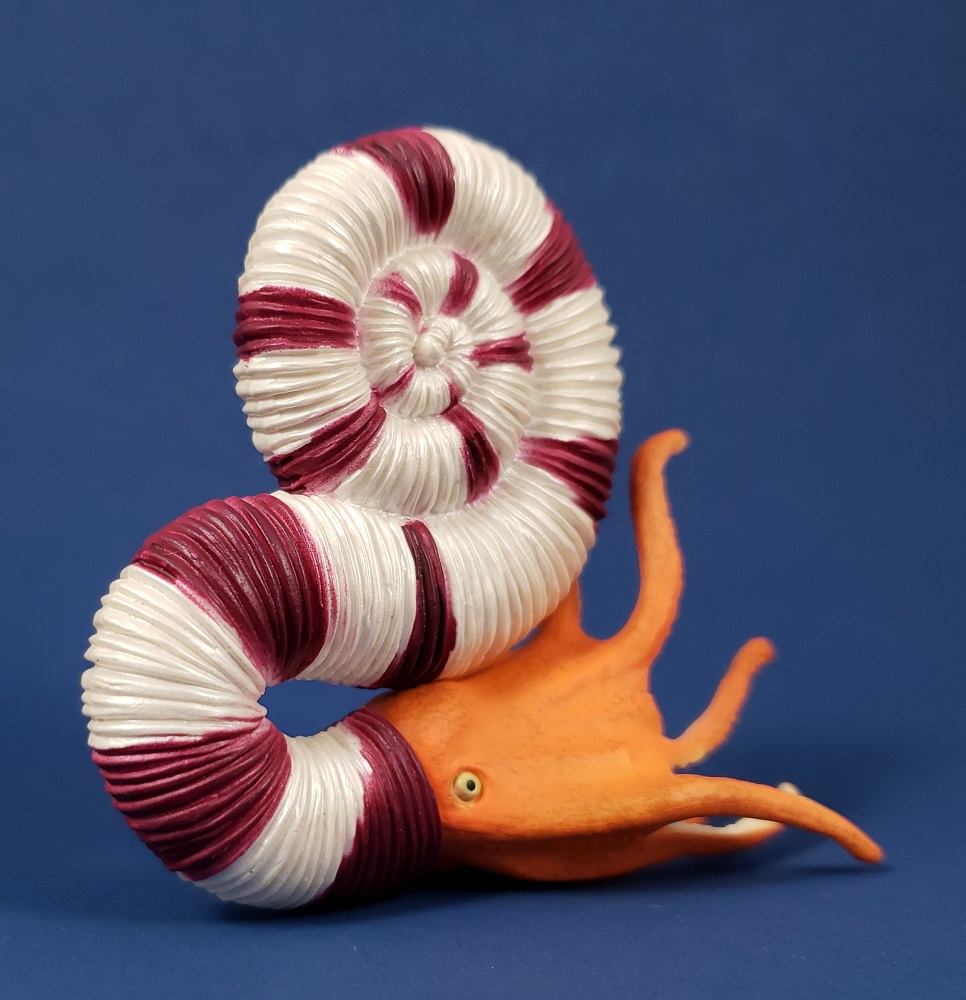
CollectA’s version is suitably festive for a December blog review, with a nice candy cane pattern. The shell alternates between a pearly off-white and a dark magenta. The arms and head are a fairly bright orange outside, and eggshell inside, and the eyes are yellow with black pupils.
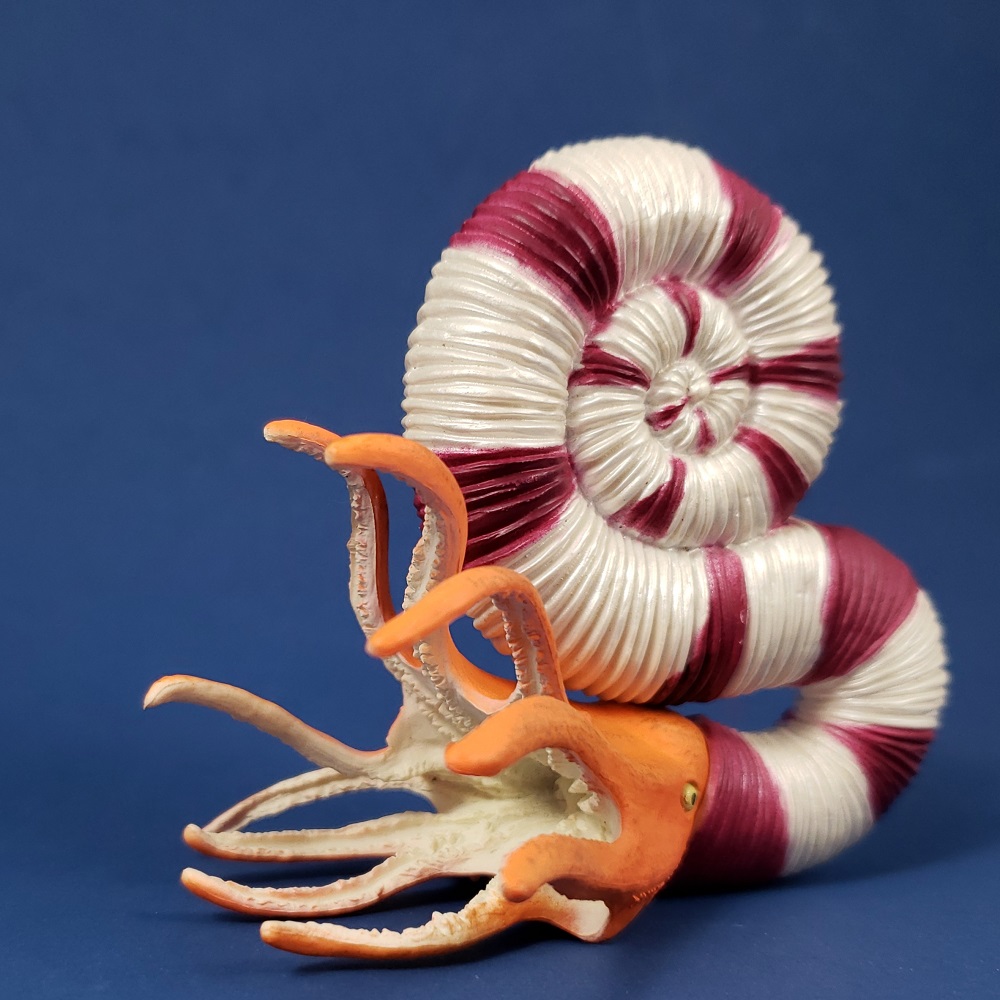
The European safety seal and CollectA logo are on the underside of the head, next to the funnel (their jet propulsion organ). Relative to its travel direction, “©2020 MADE IN CHINA” is printed to the right, and “PRAVITOCERAS” is printed on the left.

The figure has ten arms, which is almost certainly correct, as even octopuses appear to have descended from ten-armed ancestors. Each arm has a double row of texture suggesting suckers or hooks. At the center there is a somewhat indistinct mouthpart.
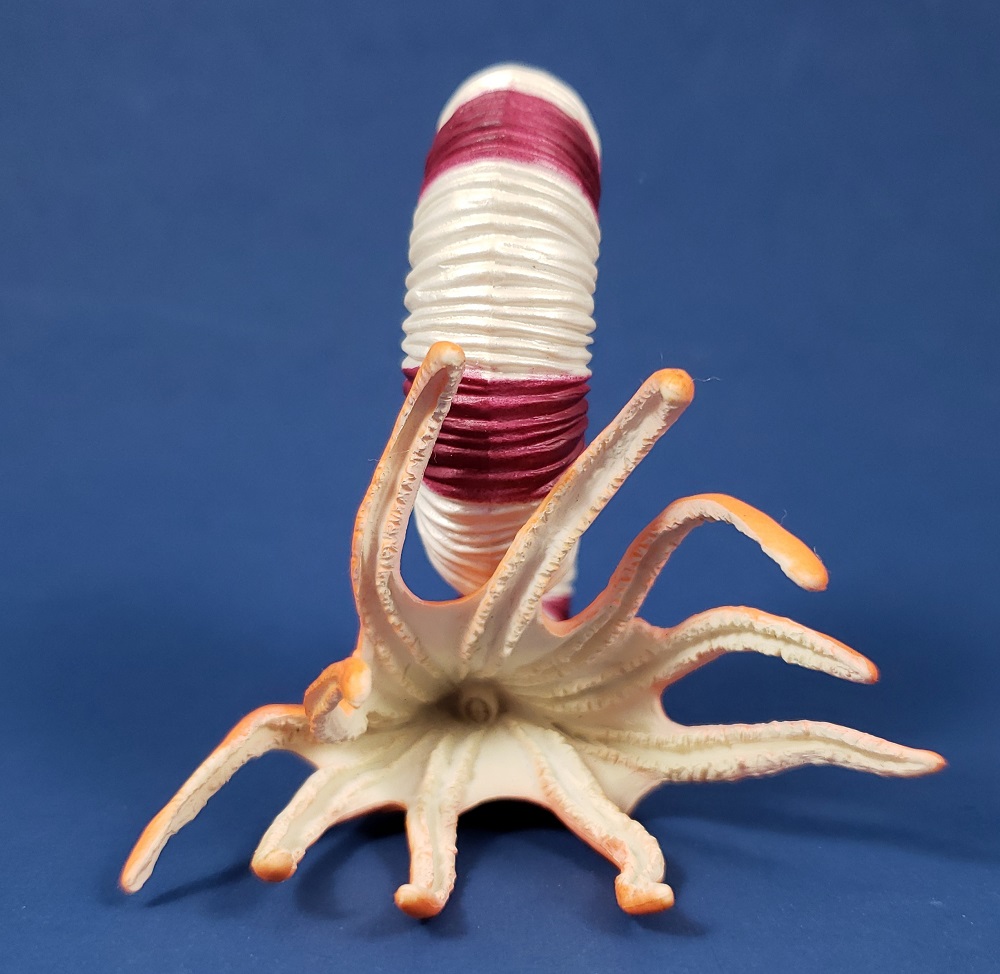
CollectA avoids the common error of adding a nautilus-like hood sitting atop the head. The aptychi of cephalopods, which are usually preserved disarticulated, were probably jaws, not hoods, so they belong hidden in the animal’s squishy bits.
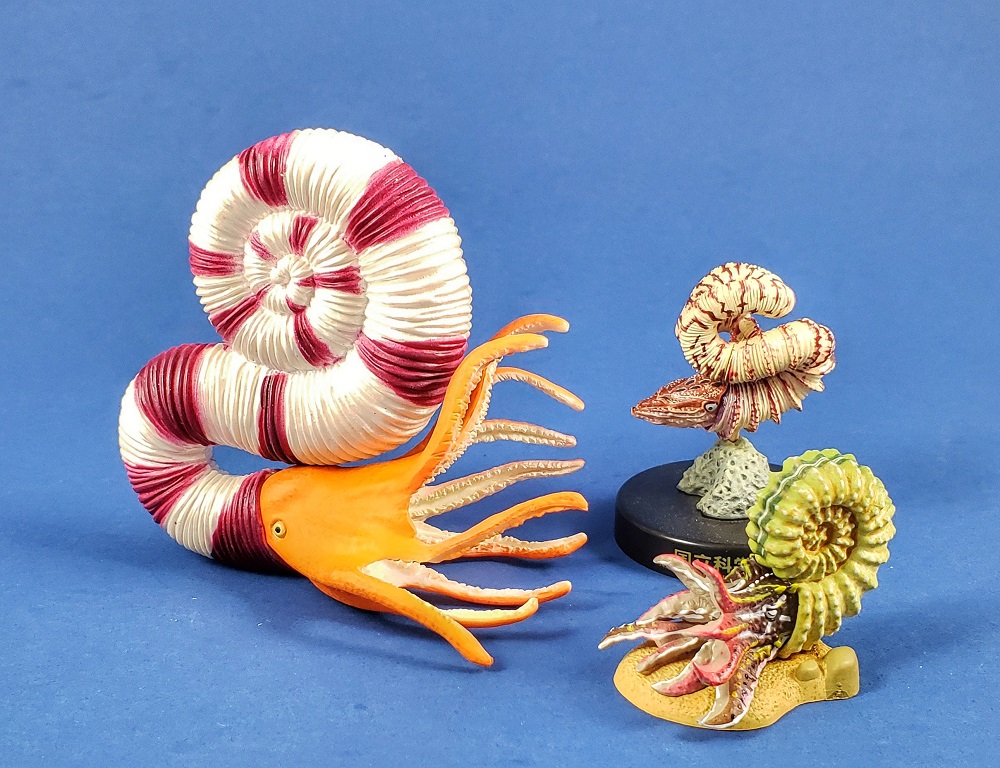
Pravitoceras is so far only known from the Campanian of Japan (Hyogo and Tokushima prefectures), but other funky-looking ammonites lived worldwide. It’s hard to know exactly how it moved, but it probably did so with greater ease than its relative Nipponites, from slightly older Japanese rocks. (This version was made by Kaiyodo).
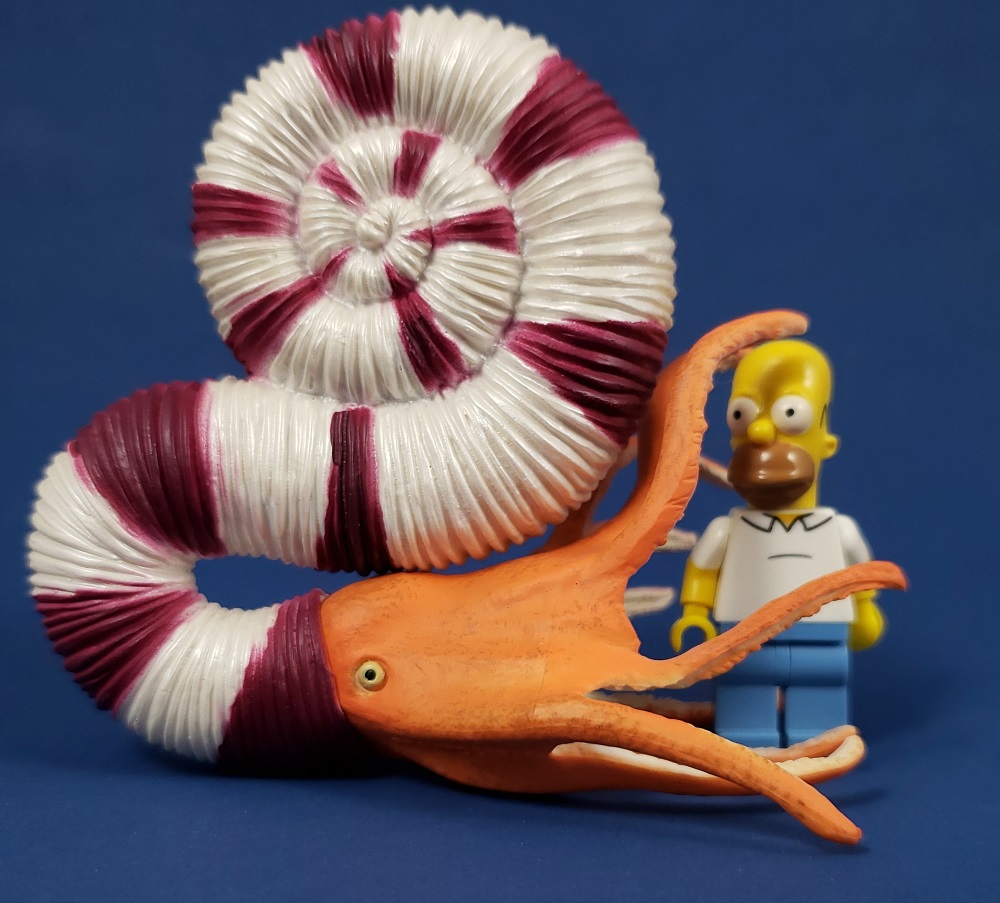
Like most heteromorphs, Pravitoceras was a smallish ammonite. Based on photographs of specimens at this level of deviation from planispiral growth, I estimate that CollectA’s figure is about 1:2 – 1:3 scale. It’s a faithful rendition of a unique morphology, an animal immediately recognizable even in silhouette. It’s a wonderful addition to CollectA’s burgeoning selection of prehistoric invertebrates, adding variety and interest to any prehistoric display. It’s available from a variety of retailers, including Everything Dinosaur and Happy Hen Toys.
Disclaimer: links to Ebay and Amazon on the DinoToyBlog are affiliate links, so we make a small commission if you use them. Thanks for supporting us!




Lovely review of an equally lovely model. Thank you! Can’t wait for CollectA to delve deeper into the prehistoric oceans.
Wonderful review of this unusual critter! It’s great to see some of these fascinating invertebrates being made into models, I hope that CollectA will continue with this series in the future.
Great to see a review from you. This one is timely too, following Blaine’s Nautilus review on the ATB and with my own Cooperoceras review coming next week. The Pravitoceras is one of my favorites of the cephalopods from CollectA.
This is my favourite CollectA cephalopod, although I’d like to see them tackle either Nipponites or a bigger version of Diplomoceras in the future.
Ha! Great idea for a holiday DTB review! The color does indeed make it festive!